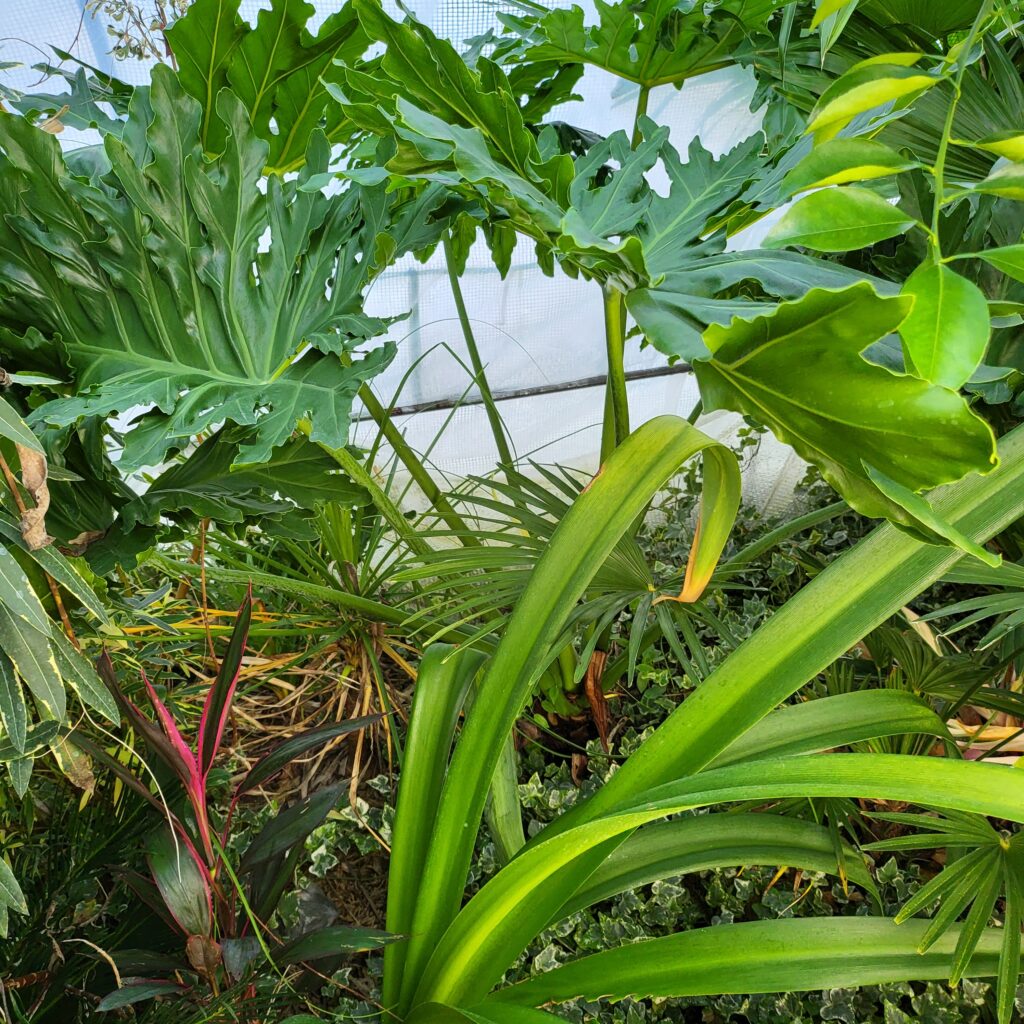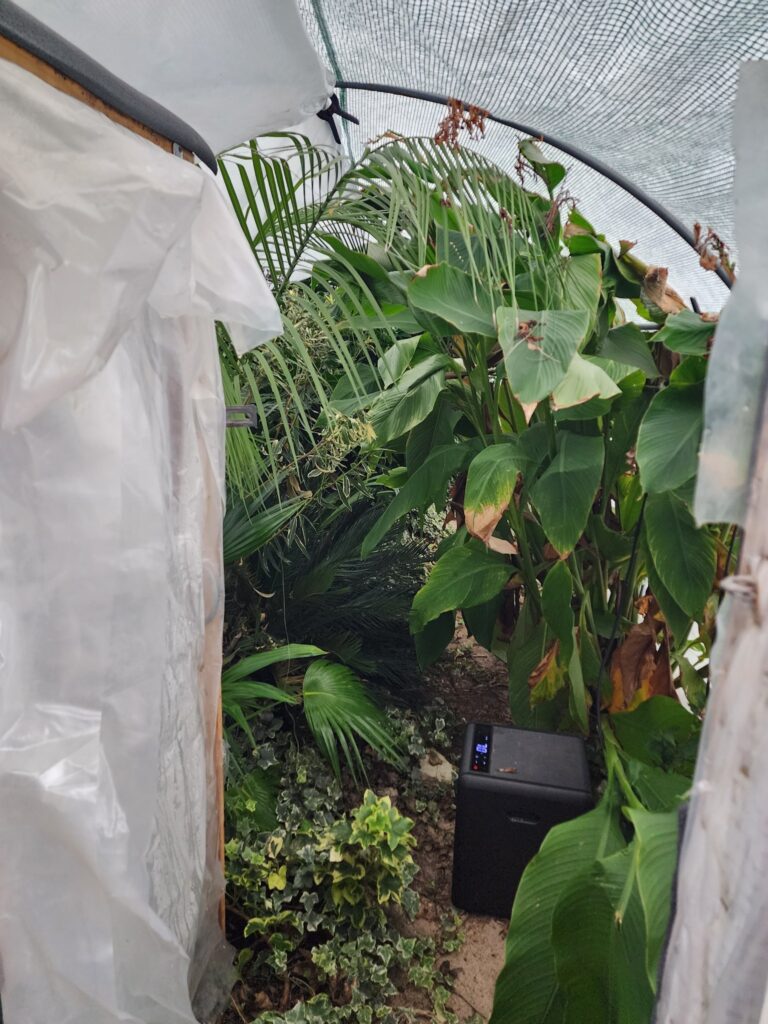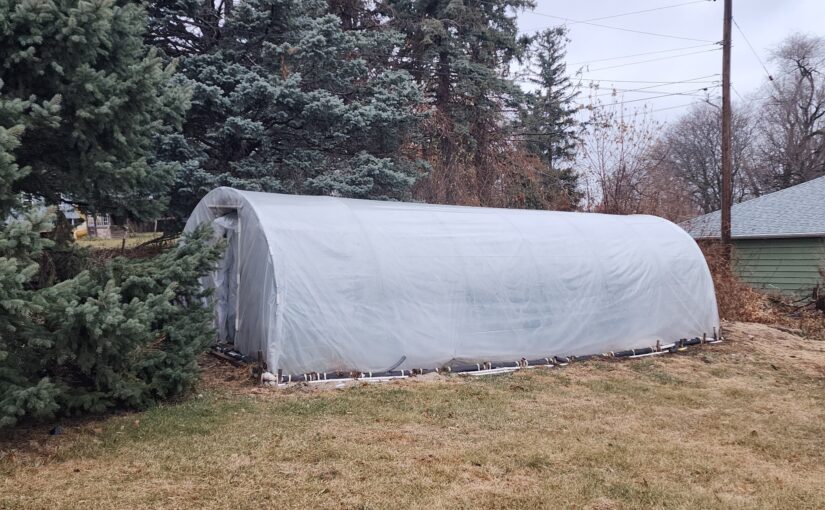Given the growth in home gardening, the fervor around houseplants, and the interest in hydroponics and other growing methods, it makes sense that the interest in home greenhouses is also building. Sure, home greenhouses have been a “thing” for a long, long while – from well-to-do folks with conservatories on their estates to the more common and basic home greenhouse in the last few decades. But shifting interests, and more/cheaper options have made home greenhouses more accessible to the masses. The number of calls that I (and other extension folks) get about greenhouses and other controlled climate production methods is increasing. And even retailers like Walmart and Wayfair have greenhouse options on their websites (I know, because my social media and email is filled with ads about them). So let’s explore some of the benefits and pitfalls as well as some of the things to keep in mind if you are considering (or already have) a home greenhouse.

Now, the timing of my thoughts on this couldn’t come at a better time (or really, I just write these blogs on topics that are current in my life). I just bought a new house and one of the benefits of this new house, aside from less peeling paint, fewer creaky floors, and (hopefully) fewer plumbing problems is that it came with a greenhouse! A real, honest-to-goodness greenhouse. Not a fancy one – its just a heated high tunnel, but it’s a real greenhouse. Apparently, the previous homeowner was enough of a plant geek to not only have a greenhouse, but plant it like a conservatory as well. So it is full of palm trees, citrus trees, and tropical plants all planted in the ground. Aside from everything being planted so close you have to bushwhack like you’re in the jungle it is quite lovely. So my big winter project will be controlling those plants and making room for stuff I want to grow. But I digress…
A few considerations for home greenhouses
There are a lot of things we could discuss about managing a greenhouse, so I won’t go in depth on a lot of things (maybe more articles to come?). But there are definitely several things you should consider before buying or installing a home greenhouse. Here’s just a few of them:
Purposes and uses
First up is to think about how you’re going to use the greenhouse. Will it be for tropical plants (houseplants), for starting seeds, growing produce, or something else? Having the purpose of your greenhouse in mind can help you choose things like size, materials, and more. For example, if you’re just planning on starting seeds in the spring for your home garden you might get away with a small greenhouse that’s just a few feet by a few feet. If you are going to grow fruits and vegetables, keep large tropical plants, or grow on a larger scale you’ll need something bigger. Keep in mind that the bigger the greenhouse, the more it will cost both in terms of materials or installation and in terms of climate control.
Climate Control & Associated Costs
Whether you live in a cold climate or hot climate, you’ll need to have some sort of climate control in your greenhouse. In cold climates, heat is the major factor. In warm climates and during hot spells, cooling and air flow can be major issues. While we think most plants like heat, there’s definitely a temperature sweet spot for plant growth and it can definitely be too hot. You’ll want to be able to control your temps to keep your plants growing best. Many of the kits available from box stores/etc. don’t include a heat source or fans, so you’ll have to either find alternatives or install your own. Amazingly, the greenhouse I inherited is heated with a space heater. This is a cheap, no-frills option but can also be risky. Shorts and fire hazards are risks, of course. But so is failure of the unit and also power outages. I’m not putting my fancy/expensive plants in the greenhouse because I could imagine a power failure during a Nebraska snowstorm with below zero temps killing everything in the greenhouse. I keep an eye on the temperatures in the greenhouse with a smart sensor (left by the previous owner) that sends temperature information and alerts to my phone, but that can only do so much when you don’t have a method to keep the temperatures up.

Of course, the other hazard will come when I see the electric bill for keeping the greenhouse warm. Even on cold days the temperatures usually warm up on their own with even a little bit of sun, but keeping the plants warm at night is the problem. I have the heater set to keep the greenhouse just warm enough so that the plants aren’t damaged killed (between 45 and 50), so I’m not paying to keep it super warm all winter long.
Of course, using fans to cool or control air flow will be another expense for most greenhouses, as will water. Greenhouses are typically pretty high humidity, but if you have a lot of air flow you’ll need to water more often. Amazingly, my greenhouse doesn’t have vents or fans, but it is small enough that it doesn’t really need them. If it were a big greenhouse, it would require some airflow to keep it much cooler in the summer. Right now, an open door (covered with netting) suffices.
One way that some folks are reducing energy costs in cold areas is by building geothermal greenhouses. These are becoming oddly common in Nebraska. These are a much bigger undertaking than just popping up a kit from a box store in the back yard. You have to dig down deep enough for the ground to aid in temperature control, have to install an underground system to intake and deliver air (to help with temperature control), and usually build a solid block or concrete wall to absorb solar heat amongst other considerations.
Location, location, location
A place to put your greenhouse is also an important consideration. Whether you are an apartment dweller popping a small greenhouse structure on a balcony (it is possible) or someone installing a walk-in greenhouse on a larger property location is important. Some greenhouse structures are lean-to or attach to the house, meaning that you get the added benefit of the heat holding properties of your house siding. I’ve even seen some greenhouses used as sun rooms – which basically is a modern day solarium. If you attach the greenhouse to your house, you’ll also want to have a safer heat source than just a space heater.

Orientation of a greenhouse can be important for those that are either elongated (like mine) or those that are on the side of a house in terms of sun exposure and temperature control. Square or roughly square freestanding greenhouses don’t have to be as planned out. For greenhouses on the side of the house, you’ll want to place it on the side of the house, or closest to the side of the house, that faces the sun. For the northern hemisphere this would be the south facing wall. For the southern hemisphere this would be on the north wall. However, in warmer climates where over heating may be an issue you might want to place it elsewhere, like on an east facing wall to get morning sun but protect it from the hot afternoon sun. This is, of course, dependent on light levels available to plants, as you’ll want to maximize light exposure in winter.
For elongated greenhouses, a common orientation is to have the greenhouse oriented north to south so that the sun passes over and both sides receive the same amount of light. An east-west orientation will mean that one side will receive more light. In windy areas like Nebraska, orientation is also important to preserve the structure. My greenhouse has a curved or hooped top (sometimes called Quonset style), which allows wind to blow over the structure. If the flat end of my greenhouse was facing into the wind (west), a strong gust of wind could damage the structure. So location and structure play a part in the ability of a greenhouse to weather the storm.
In conclusion?
We’ve covered purpose, climate control, and location in setting up a home greenhouse. There’s plenty more to talk about when building and managing a home greenhouse, so if interest is high enough perhaps I’ll talk more about the topic in future installments. What say you? Is there enough interest to keep talking about home greenhouses and following the adventures of my home greenhouse jungle?

Thank you for your discussion of the home greenhouse. As a new owner of a home in the PNW (SW Washington state) I gaze upon the lovely huge Oregon white oak trees on this 100 x 100 property. I would like to install a potting shed: not a climate controlled greenhouse. The shade of the oak trees will certainly play a role in the light, but the purpose of this potting shed will be seed starting, storage, and just plain old fun. Do you have a discussion of the humble potting shed in your writing plans?
There is more than enough interest! What is more practical–utilizing a space already heated but adding more lights inside the house OR utilizing free light but adding a heater? A dilemma for many small property owners.
Lights are more cost efficient than heating, and if you already have an indoor structure with some heat, adding lights will be the more cost effective method. What is your free light – is it an unheated porch with a ton of windows, if so, during the winter, it still will not be sufficient for many plants if no additional light is added, and not as ideal for seed starting, as seedlings will end up stretching due to angle of the light.
I once had built a quite small cold frame and grew salad greens most of the winter It wlkrd great (in mid-Michigan) BUT I had to haul water to it. I’m a small older woman and that was a lot of work. Watering in winter needs consideration!
Yes, please! I’d love to hear more about this. I’ve always been interested in the different ways people use greenhouses.
I’m currently rebuilding a South facing porch on my house to have screens in the summer that can be replaced with glass panels in winter, so I can grow plants that aren’t cold hardy (I’m in CT zone 6a). This won’t really be a greenhouse, but I think many of the same concepts apply. And depending on how it goes, I might build a freestanding greenhouse too…
Yes, I am interested in more articles on greenhouse selection and maintenance, including in ground soil heating methods.
We bought a small greenhouse for wintering tropicals, but I didn’t know how dirty it would become. Is that a thing?
I would love to hear about and learn from your greenhouse experiences!
Hi, yes please, this is an excellent topic. I know other home gardeners, like myself, investing in small gh’s. I have bought a Planta, 6.5’Lx10’W+8’H, not yet installed. I plan to start small plants (plugs, etc) and grow them for sale from home and at farm markets. I’m limited to where I can set it up, my most practical spot will get good light from E,W&S, but not N. I will need to run an in-ground electrical line out to it from the garage.
I would love to know the source of the kit greenhouse in one of your images! And yes, am interested in more info, both on geothermal greenhouses and raising winter produce in a greenhouse.
IIRC I saw a kit like that on a FB ad for Home Depot. It cost about $10,000.
Yes, please!
yes, more info please. esp smaller hobby options/needs.
Yes, please discuss what happens under such concentrated pest and disease pressure and how to manage that with ecological conscience..
YES, more talk please especially for hot climates Northern California central valley. Usage primarily for seed starting. Options for cooling, air circulation,
Yes, more info on greenhouse, cold frames, hoop house.
Great discussion! I have had a number of greenhouses over the last 70 years, but still find the considerations of design and operation fascinating. I currently live in Houston where subtropical weather temps us to try more tender plants only to be faced with occasional extremes such as February 2021 when we were hit with low of 12 degrees during an extended power outage.
Yes, plenty of interest for another writing. One thing I have noticed is the amount of questions on social media related to how to deal with aphids, mites, whiteflies, etc that seem to explode in numbers in greenhouses, and interest in biologic predators to control them rather than chemicals. Lady beetles are often mentioned, but they can be problematic themselves so some people are turning to other options. Anyway…carry on!
I’m very interested in your experience. I would like to have a greenhouse for starting seeds for our vegetable garden and possibly for growing greens in winter.
Had to use existing footprint for new Sturdibult greenhouse 20yrs ago-greenhouses never seem big enough! Added a storm cover for snow dropping from tall Doug fir. Douglas red squirrel dropped green cones–breaking glass! I have to insulate each fall with metallic bubble wrap and hard foam board—a double walled version wasn’t an option at the time.
I’m debating if I need a greenhouse or if a cold frame is more suited for my needs.